Framework is the third abstract strategy game from rockstar designer Uwe Rosenberg (Agricola) in the past couple years that contains similar mechanics, with slight changes that can effect the game. Framework is for 1-4 players and can play in under 30 minutes. The game was published in March 2022 by Pegasus Spiele, which has come out with games such as MicroMacro: Crime City, Bonfire, and Istanbul. The German publisher has been making waves for a long time, but are now making a big push into the American market with games like Fyfe, Carnegie, and Framework. And to help with that, they were kind enough to send me a copy to review.
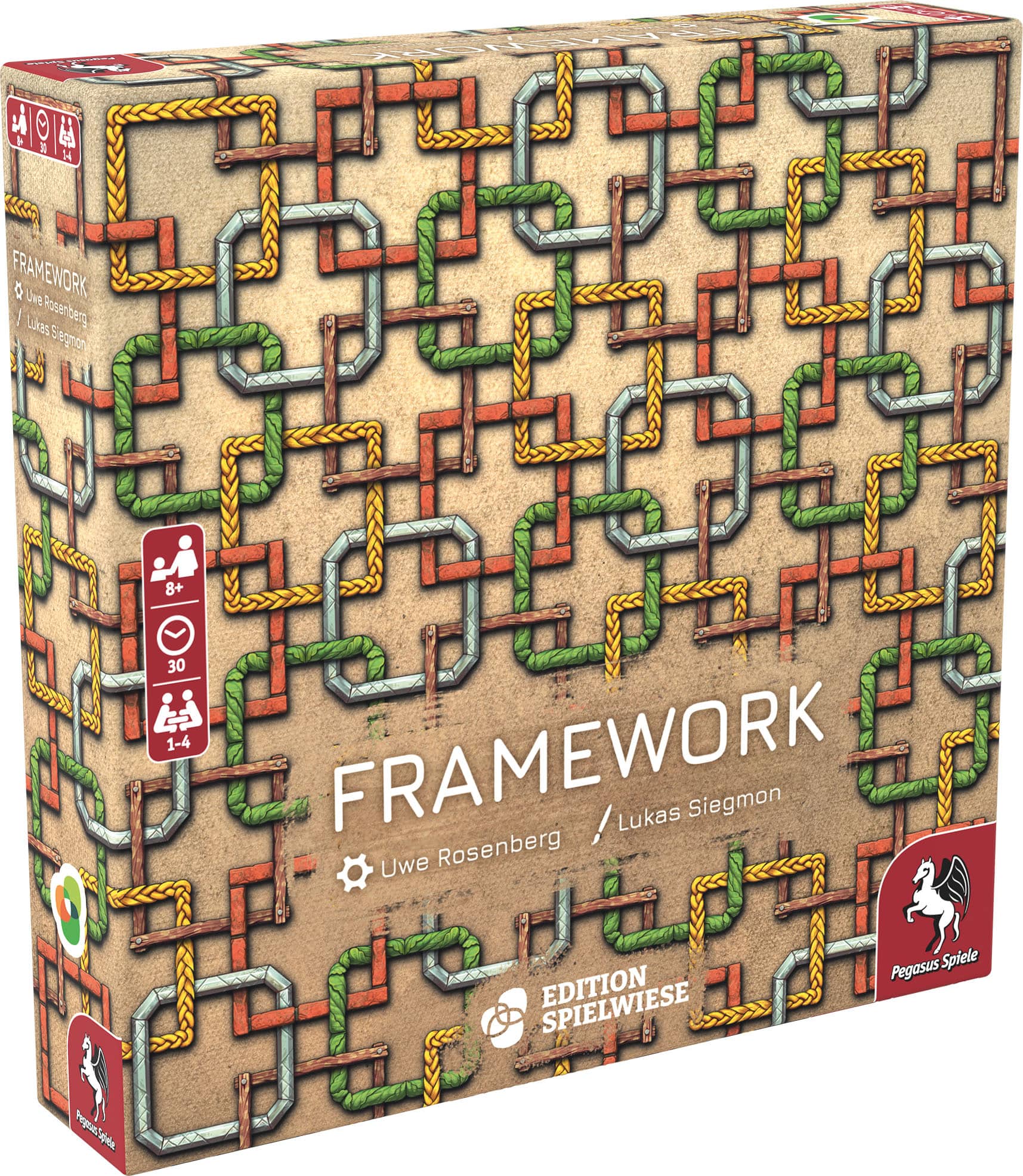
What’s in the Box?
- 120 Frame tiles
- 1 Overview/storage card
- 1 Bag
- 88 Tokens in 4 different colors
- 1 Rulebook
How’s it Play?
Each player takes 22 tokens of a specific color and places it in front of themselves. All the frame tiles are placed inside of the bag, then, the first player pulls out the number of tiles as players in the game plus 1. They lay them out and choose one to add to their own personal display, and then every other player chooses one to add to their own display, in clockwise order. There will be one tile left over after all this, which is given to the first player, who adds that tile to their display. At the end, each player has added 1 tile to their own personal display except the first player, who gets two.

Tiles can be added to the playing area only directly adjacent (horizontally or vertically) to a tile that is already in your own supply. Tiles are never played out diagonally. Placement of your tiles will determine if do well in the game or not, so strategy is key.
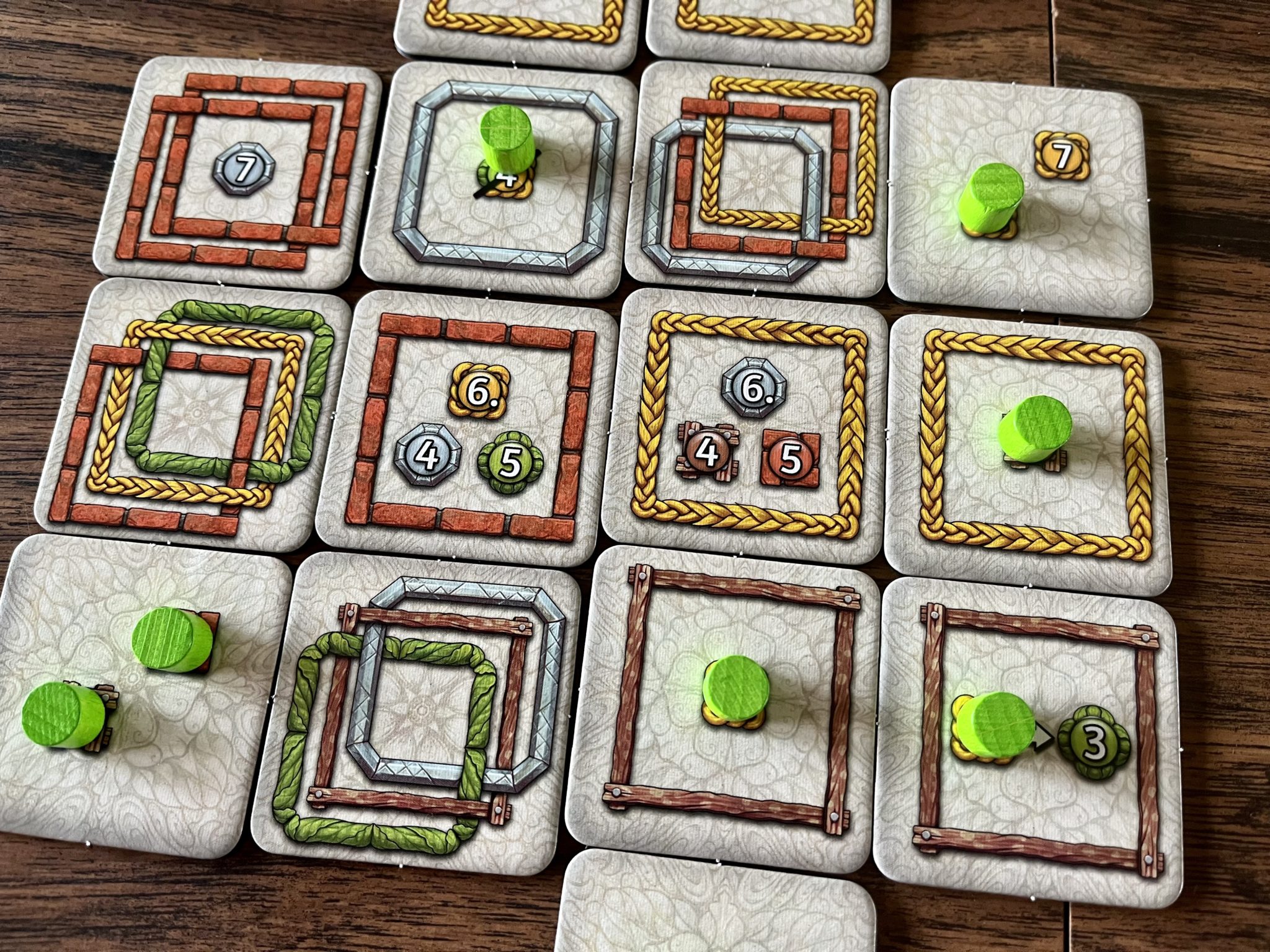
There are 2 main pieces of information on each tile. The frames, which are the colored frames on the outside of the tiles, and the task, which is a number shown in the middle of the tile. Each tile can have from 0-3 frames of 5 different colors. So a tile might have 2 frames, or no frames. And there can be 0-3 tasks shown in the middle of a tile.
Tasks are scored when there are at least as many frames in the color horizontally and/or vertically touching each other as the task requires. The color of frame on the tile with the task also counts for completion. When you complete the task, you place one of your colored tokens on top of that task. The number on the task at this point is irrelevant, as the goal it to place out your token.
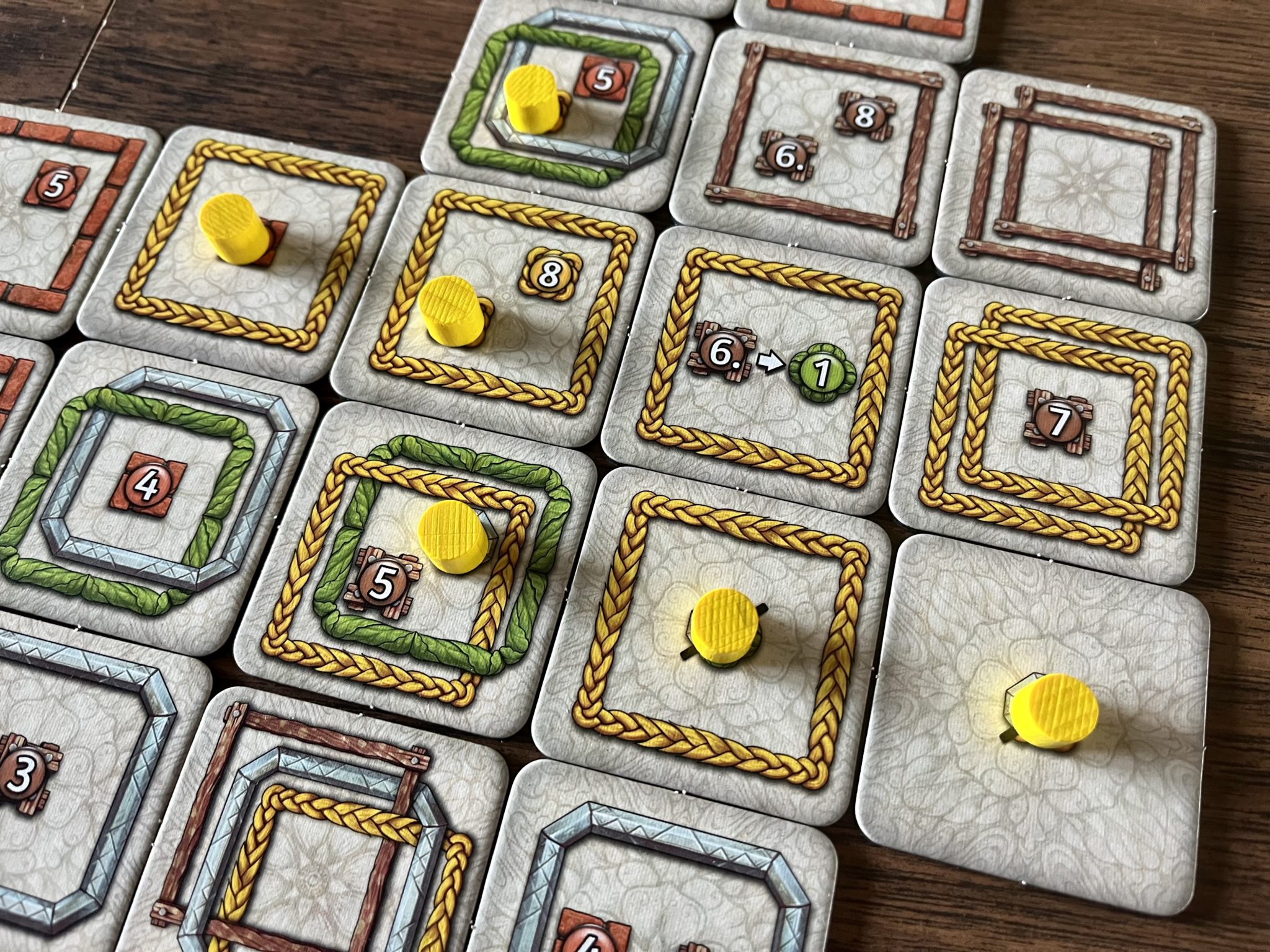
You want to complete as many tasks as quickly as possible because the first person to place all their tokens on tasks on their personal supply wins the game.
Again it’s not only the frames directly adjacent to the task that count, but all tiles that contain at least 1 frame of the required color that are adjacent to each other horizontally and/or vertically. All tiles in such a chain help complete a task as long as at least one of the tiles is adjacent to the task tile.
You are allowed to test tiles out before placing it permanently in your supply, but once they are placed, they can never be moved again, so make sure you have the tiles where you want them before continuing forward with the game.
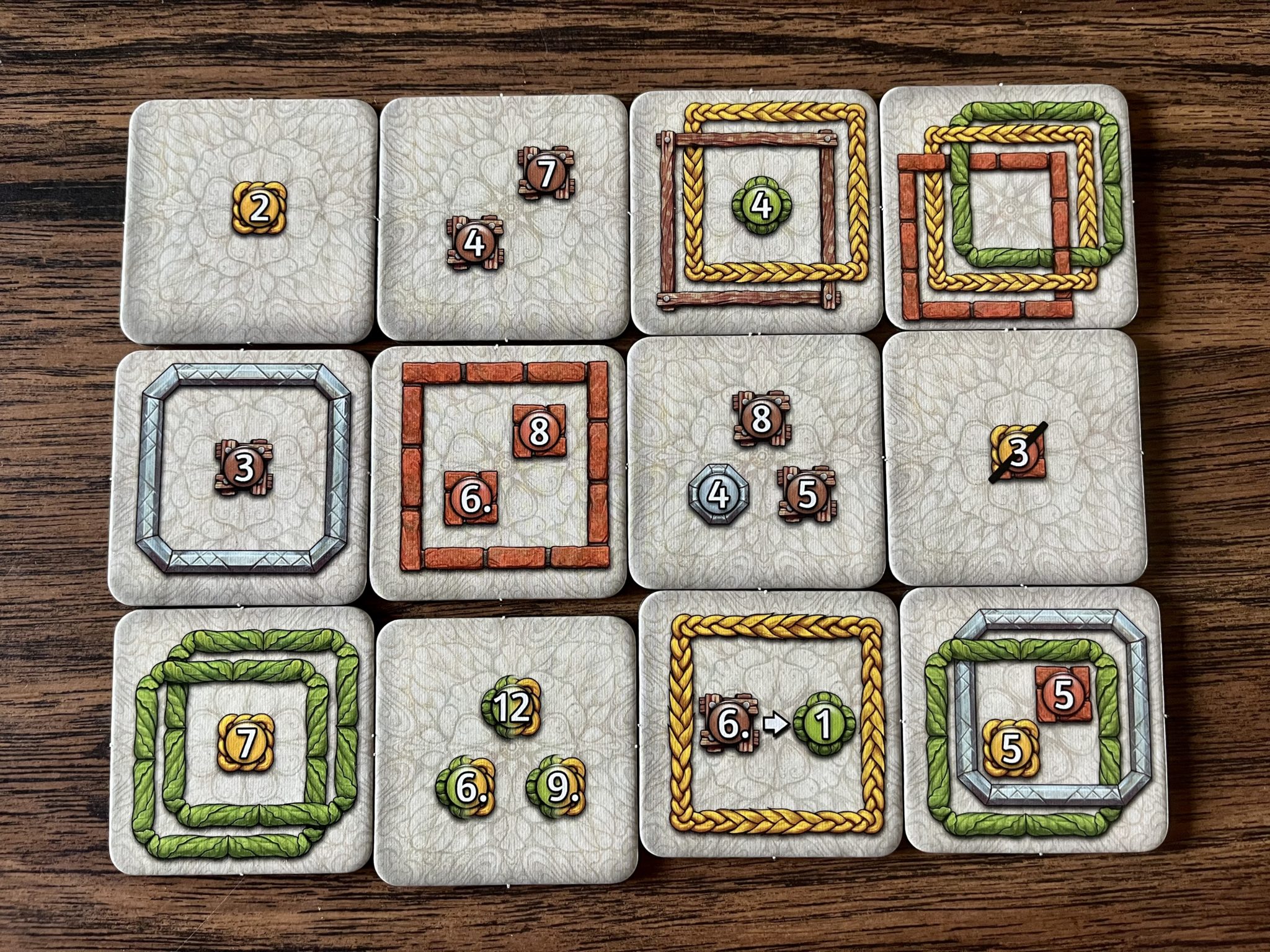
Tasks can vary within the game. Some require a specific color, while others can be one color or another. If it’s one solid color, you need to connect that many frames of that color. If the colors are split 50/50 in half without a line, you need the number of either of those colors in any combination to complete that task. If the task has 2 colors but has a solid black line slashed through it, you can pick which color, but it cannot be both. Lastly, the tasks with an arrow makes it so you have to complete the first task before completing the second task.
Framework can end in 2 ways. A player places their final token on the completed task to win the game. Or, when the last tile is drawn from the bag, the player who has placed the most tokens wins the game.
The game can also be played solo with minor changes to the rules, but still the same strategy used when placing your tiles.
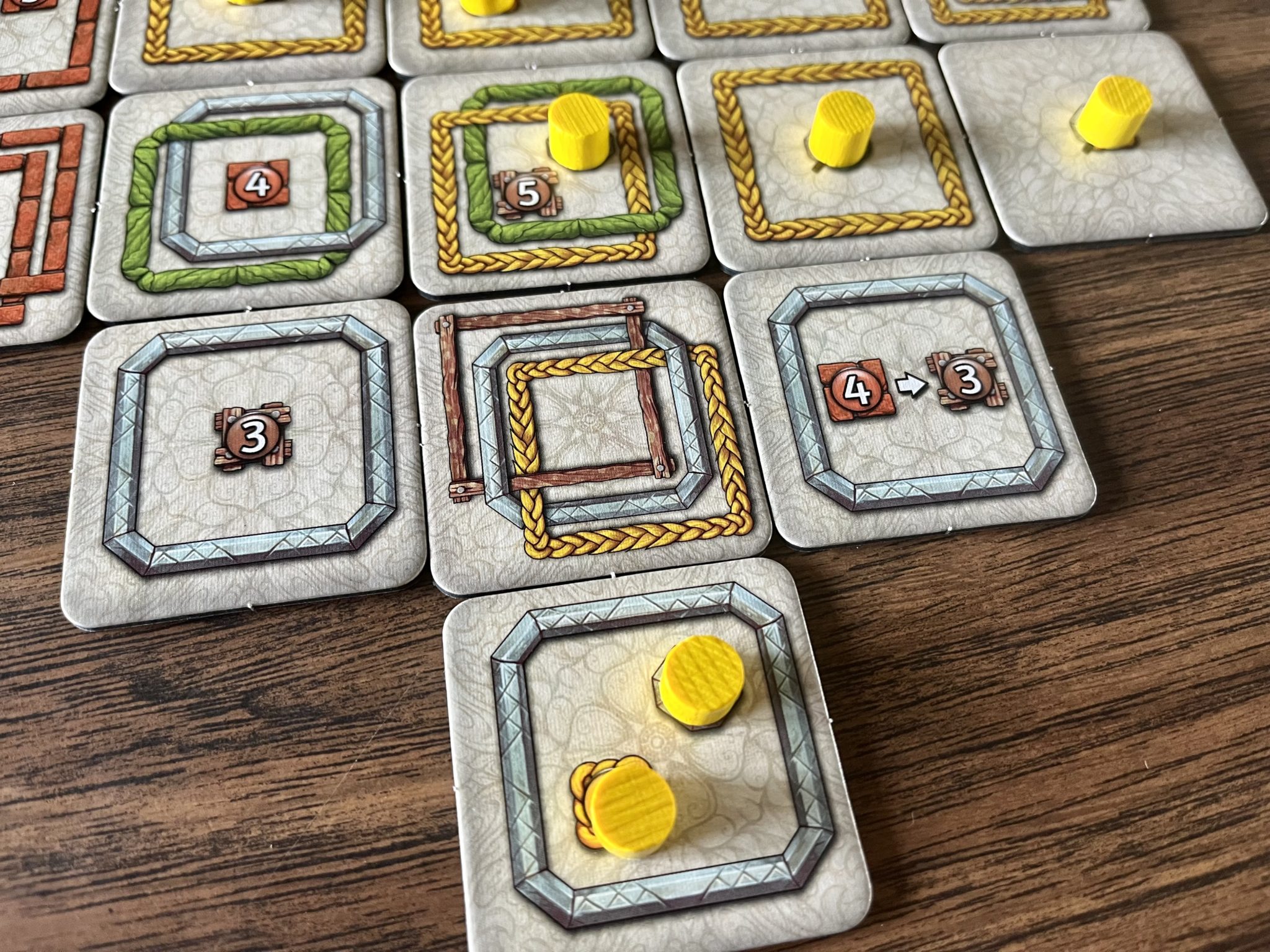
The Verdict
Framework can easily be compared to Uwe’s other games Sagani and Nova Luna. These games are very similar, though I think Framework is the clearest as far the mechanics and doing exactly what the game wants you to do. The themes and artwork vary from game to game, but since they are abstract strategy games, the difference in theme is less significant.
By itself, the game does a great job of being very strategic. Do you go after a task that has a high number on it because you already have a good group of frames of that same color? Do you go after the smaller tasks so you can complete them faster?
You also can’t focus on just tasks. The frames on the tiles are important to widening your grouping of a specific color and completing tasks already out in your personal supply.

Not only is choosing the best tiles important, but also placing them in the best spot matters. And there are a lot of spots to place them in, especially as you build up your personal supply. You will want to keep areas open to build certain frameworks, while leaving spaces open to build out from. As you place tiles, these reserved areas will change and you will need to manage which tasks you are prioritizing. There will soon be so many different tasks out you need to play more efficiently by placing down tiles that might help more than just one task.
Also keep in mind that as you build up your tiles in the early game, those tiles can also be there for future tasks. And when that task is placed next to tiles with a framework already built, it gets your tokens out in your supply faster.

Framework is sort of a race, but not one that you should be nervous about getting behind at the beginning of the game. You can catch up fairly easily. In fact, this game might be a good example of the fable of the tortoise and the hare: sometimes a steady and consistent strategy of getting those tokens out can beat a player that starts off quickly but slows down later on.
Overall, this is a very solid abstract strategy game. Do you need all the games in this series? Not really, but this is a good game that takes the mechanics of all the games in the series and makes it the easiest to understand and play. They are so close, if one looks better to you than another, that might be your deciding factor.

You can grab a copy of Framework from the Pegasus Spiele shop or your FLGS, where it’ll run you about $30.
Images via Pegasus Spiele
Have strong thoughts about this piece you need to share? Or maybe there’s something else on your mind you’re wanting to talk about with fellow Fandomentals? Head on over to our Community server to join in the conversation!

